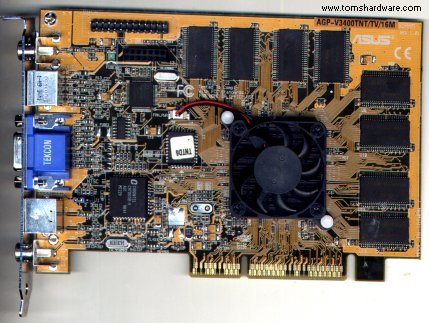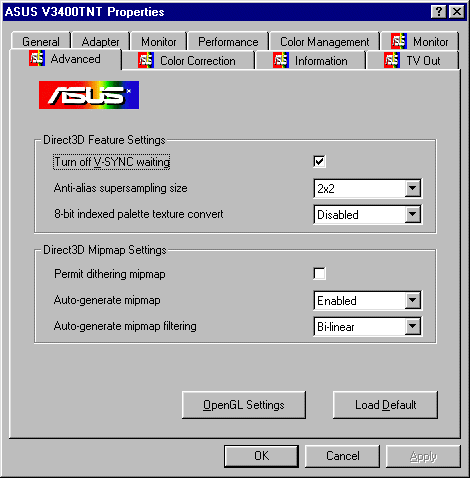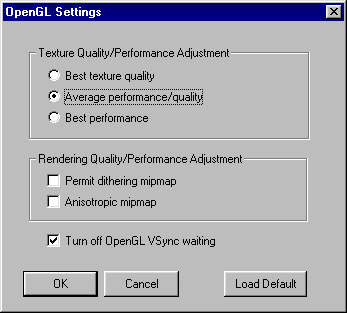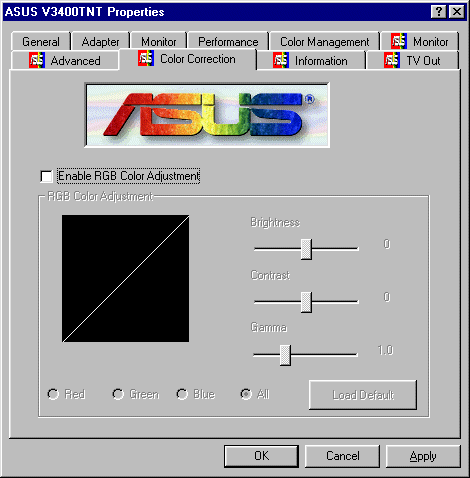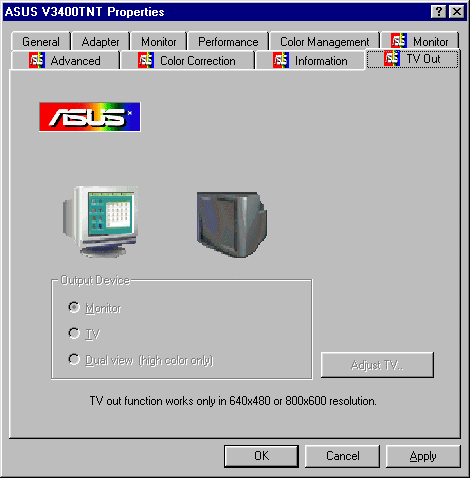Comparison of Graphics Cards with NVIDIA's RIVA TNT Chip
Recommendations
It has hardly ever been as easy to give my recommendations as in this graphics card comparison. The only TNT cards that I would buy are the Asus V3400TNT or even better the Asus V3400TNT/TV as well as the Hercules Dynamite TNT . Although those cards are the only two that come without a software bundle, the hardware and usability features speak for themselves. The Asus cards have the best cooling, good drivers, excellent 'overclockability' and the V3400TNT/TV has the best video-out feature and is the only one with video-in feature as well. The Hercules card also comes with very good cooling, the best drivers and a guaranteed 'overclockability' to 98/125 MHz.
Asus V3400TNT
There are two different V3400TNT cards available from Asus, the AGP-V3400 and the AGP-V3400TNT/TV. The latter comes with video output as well as video input, both either as composite or as S-VHS signal. The video input is unique amongst the tested cards and it can prove pretty useful for things like video conferencing or taking snapshots, of course only in case you have got a camera that you can connect to it. This is the little program provided for the video input:
The video output is also a pretty nice feature, particularly for the ones of you that like playing games on their TV screen. Of the three cards with TV-out in this test, the V3400TNT/TV is the only one that can run both, the computer monitor and the TV screen at the same time, you can even choose any refresh rate for your computer monitor, it won't affect the TV output. From the card-feature point of view, the V3400TNT/TV is definitely the most attractive card in the test.
The V3400TNT is one of the two cards in this test that come with an active heat sink. The fan and heat sink combo is the largest and most effective in this test, although it is not too large to inhibit you in any way. You can still plug in a PCI card right next to the AGP slot. The temperature test showed that the V3400TNT is the by far coolest card in the test, which is most likely the reason why it is also the one card that could be overclocked higher than any other.
The benchmark comparison shows you that at default settings, the V3400TNT is the slowest card in the test. However, the picture changes completely when you tweak the V3400TNT a little. Then it becomes one of the fastest. The reason for those strange results is Asus' conservative policy. HC Hung, the man in charge of the graphics cards division at Asus, told me that he found some minor instability with the fast memory settings suggested by NVIDIA. He told me that Asus' high reputation for excellent quality may not be jeopardized by a graphics card, which is why Asus is using the conservative slow memory settings. If the customer prefers having the same (in)stability as provided by Diamond, STB or Hercules, all of them using the fast memory settings, he can change the memory settings to achieve the same performance as the just mentioned cards. You will require Powerstrip to change the memory timing.
Asus' drivers are offering a wide spectrum of tweaks, but they would not let you change the chip or memory clock or the memory timing. The driver lets you change the refresh rate of your monitor, which is a very practical feature in my eyes. For the proper screen adjustment Asus is providing test patterns as well.
Get Tom's Hardware's best news and in-depth reviews, straight to your inbox.
Summary
All in all, the AGP-V3400TNT(/TV) is well worthy to win this competition. The only thing I would ask for is a nice overclocking tool within the drivers, just as shown by Hercules.
